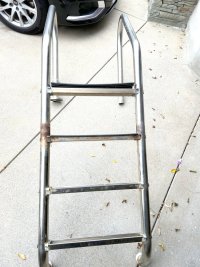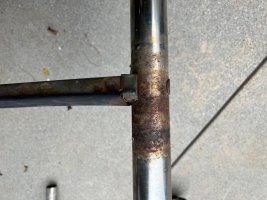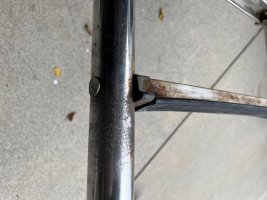 ......
......Here's a swimming pool ladder immersed for 23 years, half of that time in a saltwater pool. I took it out to replace the treads and polish it a bit.
The rust occurs at the waterline. There is no rust above, or below where it has always been submerged. The 2" stainless tube , according to the manufacturer, is "304 Stainless steel or 316L Marine grade stainless steel."
The rust polishes off, but there is pitting.
 ...
...
Why is there rust at the waterline, but no rust in air or when fully submerged?
"Waterline corrosion takes place when there is an uneven supply of oxygen to areas of the same metal component. It is a type of electrochemical corrosion that affects metals such as steel and iron. When a poorly oxygenated area is adjacent to an area with a good supply of oxygen, an anodic/cathodic reaction occurs."
I can't help but note that this is the environment of keel bolts in a bilge, and also of the rudder post where it enters the water (and we have a member whose rudder post broke clean off there, while cruising far from home).
Not to keep us awake, just a parallel example of stainless steel in the real world. A saltwater pool has 1/10 the salt of an ocean. Does salt matter with this type of corrosion?
